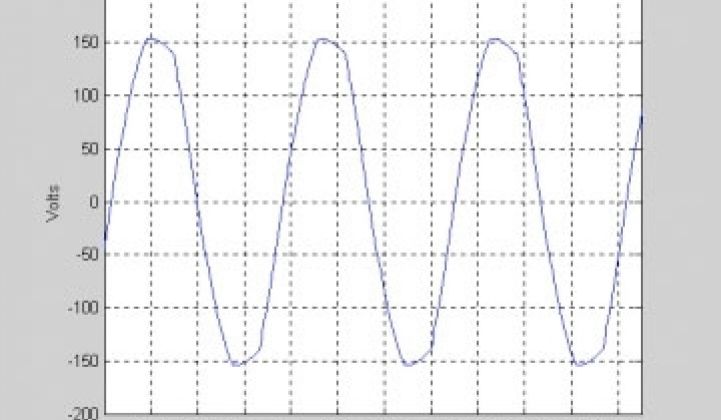Greentech Media's Utility-Scale Solar event featured an inverter panel that included some of the heavyweights in the inverter market, accounting for a combined market share of more than 50 percent of PV inverters. Participants included:
- Richard Robertson, Inverter Program Manager, General Electric
- Steve Hummel, PhD, VP of Engineering, PV Powered
- Jurgen Krehnke, President, General Manager, SMA America
- Steve Rhoades, CEO, Satcon
When asked, the panelists agreed unanimously that business was booming. Steve Rhoades, Satcon's CEO, said, "It's a good time to be an inverter company."
Certainly, the inverter market tracks the growth of the solar market as a whole, and with the solar market growing briskly, inverters are sharing the love. Greentech Media Reseach has estimated the 2009 inverter market at more than $2.5 billion. A ten-billion-dollar market is not too many years away, with inverters accounting for six to seven percent of solar industry revenues.
While solar panels have experienced extreme price pressure and falling ASPs, this trend has not impacted the inverter field. Power electronics and metals are a more mature industry and likely will not experience the same plummeting prices. Inverter prices and value could actually increase as the inverter becomes more "grid-aware" and absorbs some other system functions.
The executive panel vociferously agreed that a systems approach was the natural role of any successful inverter product and company. Several panelists spoke of being "good citizens on the grid," contending that "systems need to be operated like power plants." This elicited more agreement from the panel that a system has to be managed by the inverter "from panel to grid."
Microinverters have made a bit of splash in the solar industry, but don't expect to see them in utility-scale installations anytime soon -- or ever, for that matter. Microinverters provide "way too much information," according to a panelist. While Satcon absolutely supports a distributed Maximum Power Point Tracking (MPPT) architecture, as in their Solstice line, their MPPT function is at the string level, controlling about two percent of the array, versus monitoring performance at the individual panel level.
While solar panels see their share of materials innovations, inverters are less likely to see disruptive change. New component technology, such as silicon carbide diodes and switches, face cost challenges despite the real potential of improved performance.
Nevertheless, new technologies are being assessed. Rhodes of Satcon did mention inverters integrated with a small amount (e.g., two minutes' worth) of lead-acid battery storage capacity. PV Powered is working with eIQ, a parallel DC architecture startup, to carefully assess their approach in a real-world environment, and the firm is also working with synchrophasor technology to better understand system performance and cope with reactive power.
As the utility inverter industry has moved from cost improvement to efficiency gains to being a good partner on the grid, the consistent element has been strides in reliability against the backdrop of what Steve Hummel of PV Powered called "a brutal design environment."



